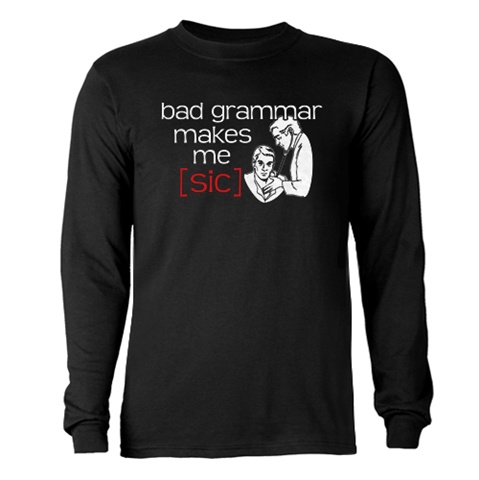There’s been lots of serious discussion emerging this week about J.K. Rowling’s pronouncement of Dumbledore’s sexuality, but it’s been great fun to see some entertaining spins emerging too. For one thing, New York magazine has written a list of "Ten Other Fictional Characters Whose Outings Won’t Shock Us That Much" that’s rather amusing. Better still, though, is The Onion, who’s done my favorite piece on the subject, in part because I couldn’t help feeling some affinity for the comments of Larry Hahn, Water Delivery Man. (And because Ralph Draper, Tow Druck Driver casts BY FAR the funniest spell of the week.)
I’ve been feeling frustrated with Rowling’s decisions to tell us more about her books’ characters than what she revealed outright in the books themselves. Today I found an essay by Columbia University law professor Michael C. Dorf that pretty well summarizes my thinking. Dorf says the following (and then compares this situation to the ways in which people interpret the U.S. Constitution): "[G]iven that the Potter books, now complete, make no mention of Dumbledore’s sexuality, Rowling would not appear to have any authority to declare the print version of Dumbledore gay, straight or bi. Her views on such matters are naturally of interest to fans of her books, but the work must stand on its own…. To be sure, learning something about an author’s intentions or life experiences may lead a reader to discover an interpretation that might not otherwise have occurred to him…. In the end, though, an author of a work of fiction is, at best, first among equals in interpreting that work. Her intentions do not control the meaning of the text."
I also agree with the thoughts of Rebecca Traister, a devoted Harry Potter fan at Salon.com, who writes the following:
There’s a very cheerful side to Rowling’s decision to directly address Dumbledore’s homosexuality. Throughout the series, she has been diligent not only in her narrative exploration of bigotry and intolerance, but also in her commitment to the inclusion of characters of different races, cultures, classes and degrees of physical beauty. It would, in fact, have been a glaring omission had none of the inhabitants of her world been homosexual…. But while it’s all well and good to see kids giddy at the news of their hero’s homosexuality, Rowling’s interest in making things perfectly clear (or queer, to borrow queer theorist Alex Doty’s pun), not only about Dumbledore but also about the future and livelihood of all of her characters, provokes thorny questions about the role and responsibilities of an author once she has concluded her text…. My brother, an adult reader who has been irritated by Rowling’s loquaciousness and was sent over the edge by this latest round of fortune-telling, said to me this weekend, "If she wants to tell us what happens, I wish she would write it in a book, because until she does, then as far as I’m concerned, she’s just describing what’s showing on the teeny TV screen inside her head, and that’s not playing fair."
I personally don’t like hearing about characters’ lives off the printed page, because to my mind that’s NOT those characters. Characters exist only as we know them as readers, and the information we’re given about them is what appears in the stories that are written about them and nowhere else. If an author believes something about her characters but doesn’t make those beliefs clear in her writing about them, there’s no guarantee that the reader will pick up on or share those same beliefs. Those character may not, then, "BE" what the writer envisioned them to be.
I think the semantics of Rowling’s original announcement are significant. “I always saw Dumbledore as gay,” she said. And that’s exactly it. SHE always saw Dumbledore as gay. But many of her readers did not, and it seems unfair now to suggest that they/we were somehow wrong.
As readers we each come to a book with our own ideas, our own experiences, our own interests, and those things inevitably influence what we see on the printed page. In the end, Dumbledore is gay if you read the Harry Potter books and believed he was gay, he’s straight if you read the books and believed he was straight, and he’s non-sexual if (like me) you just never bothered to think about his sex life at all.
No matter how you view it, Dumbledore’s sexual orientation has no real bearing on his significance to Harry Potter’s story, as it’s a fact that influences his actions off the printed page—a place we readers can go only in our own minds.



















